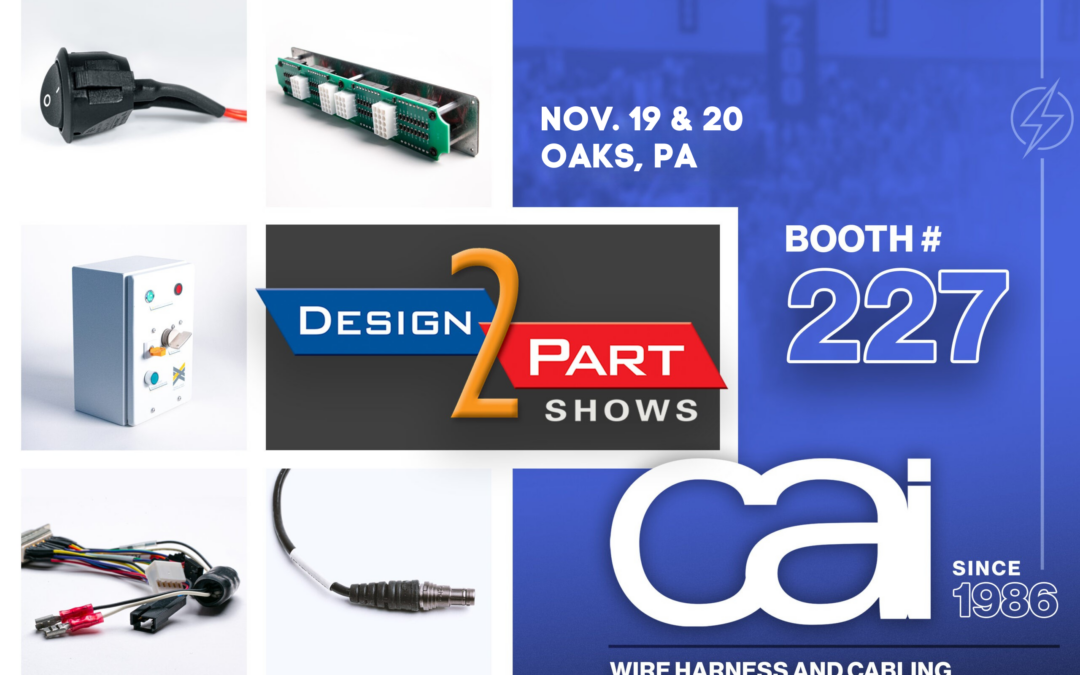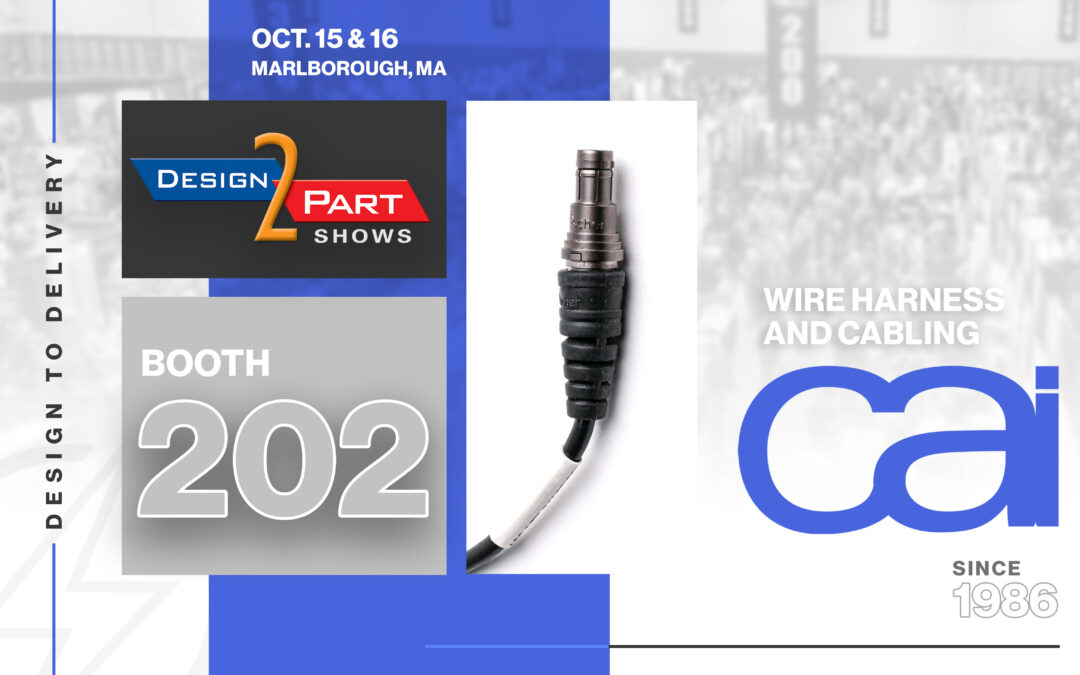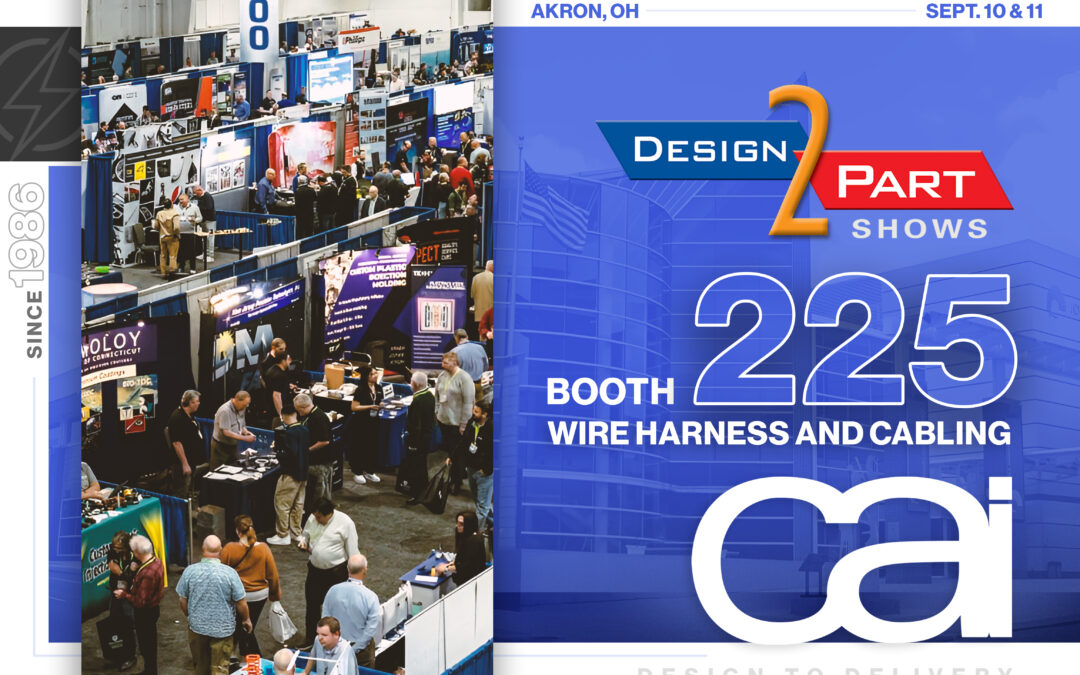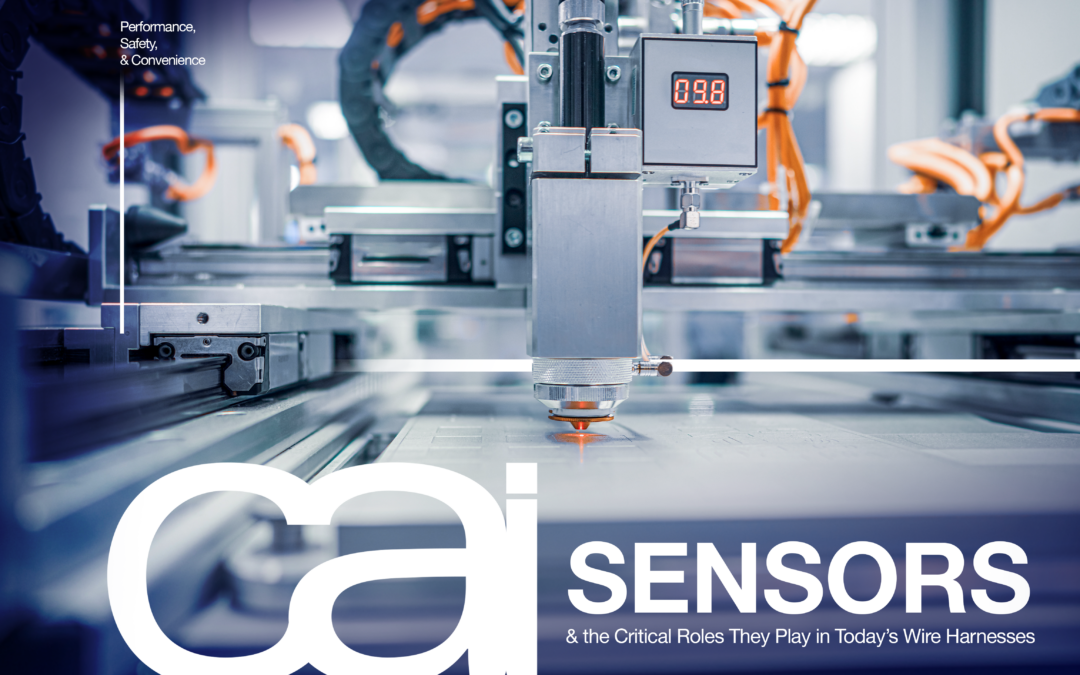Intricate Wire Harnesses Require Custom Solutions From Trusted Experts
Used in countless electrical applications, wire harnesses come in all shapes, sizes, and complexities. While a “simple” wire harness organizes a handful of wires into a bundle for basic connections, a “complex” wire harness features numerous wires, branches, and connectors for various components, acting as a more intricate wiring system that requires custom solutions and expert craftsmanship.
Complex wire harnesses are integral parts in a wide range of industries, including automotive, medical, aerospace, and industrial. They involve diligent design, sophisticated functionality, and unique routing for more-demanding applications and environments. Prototyping is essential with custom complex harnesses to find and address issues before the optimal design is sent to full-volume production.
With over 35 years of experience, CAI is the complex wire harness provider you can trust to handle all the intricacies of your product and work with you to get every detail just right. Connect with us today to talk about your unique electrical needs.
From the number of components to overall harness size and weight, several factors contribute to the complexity of a wire harness, including:
-
Number of Wires & Connections
A complex harness often has a high wire count, as in hundreds or thousands of individual wires, as well as dozens of connectors, each performing a specific function. This makes elements such as routing, separation, and proper connection more challenging than with simpler harnesses. These wire harnesses can have multiple branches or sub-harnesses connecting different systems or components, adding to the complexity.
-
Variety of Wire Types & Sizes
More wires usually means various wire thicknesses (wire gauges), each chosen for specific power or signal requirements. Certain applications also call for custom-designed components with specific properties, such as high-temperature resistance, high flexibility, or enhanced durability. Managing high voltages and currents also require careful design to prevent overheating, short circuits, or failures.
-
Special Connectors & Terminals
Such harnesses may use a variety of specialized connectors, including multi-pin, circular, or those tailored for specific electrical and mechanical performance. Ensuring compatibility between connectors, terminals, and cables is essential for functionality. If a harness connects to multiple devices, panels, or systems, managing the large number of connection points increases the difficulty of the design and assembly process.
-
Environmental Conditions
Harnesses designed for harsh environments and operating conditions require special designs and materials to perform reliably while withstanding threats such as extreme temperatures, moisture, electromagnetic interference (EMI), vibration, chemicals, dust, dirt, and oils. Specific insulation, coverings, and other elements are selected to match the application and environment. This also includes the potential use of strengthening or protective devices or processes like strain reliefs, overmolding, or specialized shielding.
-
Multifunctionality
A wire harness might need to connect multiple systems — e.g., electrical, mechanical, or hydraulic systems — that interact with each other. This calls for multifunctional design to properly integrate these systems for optimal performance. Some wire harnesses are modular and reconfigurable based on the specific requirements of the application, which increases the engineering and manufacturing complexity.
-
Routing
Routing can also be more difficult with larger, complex wire harness applications, as tight spaces, sharp corners, and interference with other electrical components can cause issues like overheating, mechanical stress, or damage to other systems. Organization of these harnesses is often more complicated compared to those with less demanding layouts.
-
Manufacturing & Assembly Process
When manufacturing simple wire harnesses, the production of the individual wires can be automated. With complex harnesses, getting the correct wire lengths is more challenging, which is why they often require a combination of automated and manual assembly techniques, particularly for high-volume production. Meanwhile, complex harnesses also call for greater precision, more thorough testing, and tighter quality control.
-
Overall Size & Weight
The more wires, connectors, and other components, the larger and heavier a wire harness is likely to be. Some harnesses can weigh hundreds of pounds and stretch hundreds of feet. Such large sizes and weights can create handling, installation, and weight distribution challenges in their intended applications.
Complex wire harnesses require careful, customized design and precise manufacturing due to a combination of factors, including the number and types of components and the specific functionalities.
CAI specializes in custom complex wire harnesses and other electrical component manufacturing, providing complete solutions from prototype to production. Reach out to us today to discuss your upcoming project.





